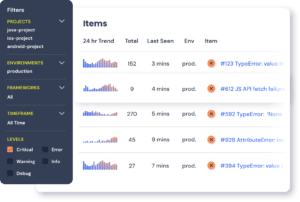The NoSuchFieldError is an error in Java that occurs when a specified field does not exist. It is thrown when an application attempts to access or modify a field of an object or a static field of a class but the object or class no longer contains that field.
The NoSuchFieldError only occurs during runtime if the definition of a class has changed incompatibly. Since it is thrown at runtime, it does not need to be declared in the throws clause of a method or constructor.
What Causes NoSuchFieldError
The NoSuchFieldError error occurs if an application tries to access or modify a specified field of an object, and the object no longer has that field. This can occur if the definition of a class changes incompatibly after compilation.
In case code is only partially recompiled, old code can exist that references a field which no longer exists in the recompiled classes, causing the NoSuchFieldError.
NoSuchFieldError Example
Here is an example of a NoSuchFieldError thrown when a field that does not exist is referenced.
Here’s a class MyClass that contains a static variable msg:
public class MyClass {
public static String msg = "Hello World";
}Here’s a class NoSuchFieldErrorExample that refers to the static variable str from MyClass and prints out its value:
public class NoSuchFieldErrorExample {
public static void main(String args[]) {
System.out.println(MyClass.msg);
}
}Running the above code produces the correct output as expected:
Hello WorldNow, if the variable msg is removed from MyClass:
public class MyClass {}And only MyClass is recompiled, but not NoSuchFieldErrorExample:
javac MyClass.javaNow if the program is executed again:
java NoSuchFieldErrorExampleThe following error is thrown:
Exception in thread "main" java.lang.NoSuchFieldError: msg
at NoSuchFieldErrorExample.main(NoSuchFieldErrorExample.java:3)This is because the definition of MyClass was changed (a field was removed) and a class that referenced its members (NoSuchFieldErrorExample) was not recompiled. This change is incompatible since a referenced field no longer exists, causing a NoSuchFieldError.
How to Resolve NoSuchFieldError
To avoid the NoSuchFieldError, all existing files should be cleaned and compiled from scratch. All the latest compiled files will then be available, so any missing fields in code will be pointed out by the compiler, helping avoid the NoSuchFieldError at runtime.
If the error persists after recompilation, it may be because of using different versions of external JAR files at compile time and runtime. In such cases, the same version of JAR files should be used.
It's also helpful to run the application with the -verbose: class option to check the loaded classes. This can help identify the incompatible class.
Track, Analyze and Manage Errors With Rollbar

Managing Java errors and exceptions in your code is challenging. It can make deploying production code an unnerving experience. Being able to track, analyze, and manage errors in real-time can help you to proceed with more confidence. Rollbar automates error monitoring and triaging, making fixing Java errors easier than ever. Sign Up Today!






